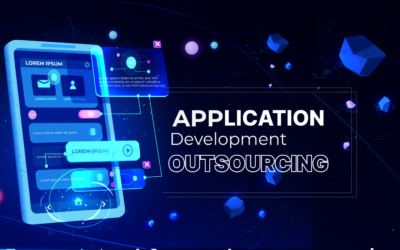Staff Augmentation vs Traditional Hiring: Which Is Right?

Introduction:
In today’s competitive business landscape, organizations are constantly striving to find the right talent to fuel their growth and success. When it comes to expanding your workforce, you’re faced with the decision of staff augmentation or traditional hiring. Both options offer unique benefits and considerations, and making the right choice requires a thorough understanding of your organization’s needs, goals, and resources. In this blog post, we will explore the differences between staff augmentation and traditional hiring and help you make an informed decision for your organization.
Staff Augmentation: Flexibility and Specialized Skills
Staff augmentation is a strategic approach that involves hiring external professionals on a temporary basis to fill specific skill gaps or complete projects. This method allows you to augment your existing team with professionals who possess the precise expertise required for a particular task or project. Here are some key advantages of staff augmentation:
I) Flexibility: Staff augmentation provides the flexibility to scale your workforce up or down as per the demand of your projects. You can quickly add or remove resources based on the changing needs of your organization, which is particularly useful for short-term or seasonal projects.
II) Cost-Effectiveness: Opting for staff augmentation can be a cost-effective solution compared to hiring permanent employees. By avoiding the expenses associated with full-time salaries, benefits, and overhead costs, you can allocate your resources more efficiently.
III) Specialized Skills: When you hire staff augmentation professionals, you gain access to a pool of specialized skills and expertise. This allows you to tap into talent that might not be readily available within your organization, accelerating project timelines and ensuring quality deliverables.
IV) Reduced Onboarding Time: Staff augmentation professionals are typically experienced and familiar with their roles. This eliminates the need for lengthy onboarding processes, as they can quickly integrate into your team, adapt to your project requirements, and start contributing from day one.
Traditional Hiring: Long-Term Investment and Cultural Fit
Traditional hiring involves recruiting employees on a full-time basis, who become an integral part of your organization’s workforce. Here are some advantages of traditional hiring:
1) Long-Term Commitment: Hiring permanent employees signifies a long-term commitment to the growth and stability of your organization. They become invested in your company’s mission, values, and long-term goals, which fosters loyalty, dedication, and a sense of belonging.
2) Cultural Fit: Cultural fit is crucial for building a cohesive and harmonious work environment. Traditional employees have the opportunity to align with your company culture, core values, and team dynamics, leading to increased collaboration, employee engagement, and overall productivity.
3) Knowledge Retention: With these employees, you benefit from consistent knowledge retention. As they work on projects over an extended period, they accumulate valuable institutional knowledge and become subject matter experts. This helps maintain continuity and avoids knowledge gaps when team members transition or leave the organization.
4) Career Development: Traditional employees expect career development opportunities within your organization. By offering growth prospects, training, and advancement opportunities, you can foster employee loyalty, motivation, and talent retention.
Making the Right Choice:
To determine whether staff augmentation or traditional hiring is the right choice for your organization, consider the following factors:
A) Project Duration: If you have short-term or specific projects with a defined timeline, staff augmentation provides the flexibility to quickly ramp up or down, ensuring you have the necessary resources as and when required.
B) Skill Requirements: Assess the skill gaps within your organization and identify whether you need specialized expertise for a short duration or if you require employees who can contribute to your organization’s growth over the long term.
C) Cost Considerations: Evaluate your budgetary constraints and determine whether you can afford the overhead costs associated with traditional hirings, such as salaries, benefits, and training, or if a more cost-effective approach like staff augmentation aligns better with your financial goals.
D) Organizational Culture: Consider the importance of cultural fit within your organization. If your company culture and values are central to your success, traditional hiring allows you to carefully select individuals who will thrive in your environment and contribute to a positive work culture.
Differences between Staff Augmentation & Traditional Hiring:
| Key Differences | Staff Augmentation | Traditional Hiring |
| Duration and Flexibility | A temporary solution to fill specific skill gaps or complete projects. Short-term or project-based. | Recruiting employees on a full-time basis. Long-term commitment to the organization. |
|
Cost Considerations |
Cost-effective solution. Avoids the expenses associated with full-time salaries, benefits, and overhead costs. | Hiring permanent employees entails expenses such as salaries, benefits, training, and other overhead costs. |
| Skill Expertise | Access to a pool of specialized skills and expertise. Hired for their specific skill sets. | An opportunity to develop talent within the organization. Possessing a broader range of skills & expertise. |
| Onboarding and Integration | Experienced and familiar with their roles, requiring minimal onboarding. | Comprehensive onboarding process to familiarize them with the organization’s policies, procedures, and culture. |
|
Knowledge Retention and Continuity |
Bring their expertise to the organization for a specific project or period. The knowledge may not be retained, potentially leading to knowledge gaps in the future. | Contribute to knowledge retention within the organization. They accumulate institutional knowledge, become subject matter experts, and contribute to growth. |
| Cultural Fit and Loyalty |
Work on a temporary basis and no alignment with the organization’s culture and values. The focus is on delivering the required services or completing the project. |
Allows for a stronger emphasis on cultural fit. They become invested in the organization’s mission, values, and long-term goals, fostering loyalty, dedication, and a sense of belonging. |
Conclusion:
Choosing between staff augmentation and traditional hiring is a decision that requires careful consideration of your organization’s specific needs, goals, and resources. Staff augmentation offers flexibility, specialized skills, and cost-effectiveness for short-term projects, while traditional hiring provides long-term commitment, cultural fit, knowledge retention, and career development opportunities. By evaluating the project requirements, skill gaps, budgetary considerations, and organizational culture, you can make an informed choice that aligns with your organization’s strategic objectives and sets you up for success in the ever-evolving business landscape.
Are you looking for any IT Services such as Web design and Development, Professional/Staff Augmentation Services, Cloud Computing, Mobile App Development, Digital Marketing Services and more? Connect Stridefuture Technology, which helps to meet your requirements.
{StrideFuture Technology, a full-service company specializing in Software Solutions and Consultancy services. We specialize in Personal, Business, IT Services, Web design and Development, Mobile App Development, Digital Marketing Services, and much more you can dream Virtually with us! Reach out for more service at StrideFuture Technology.}









